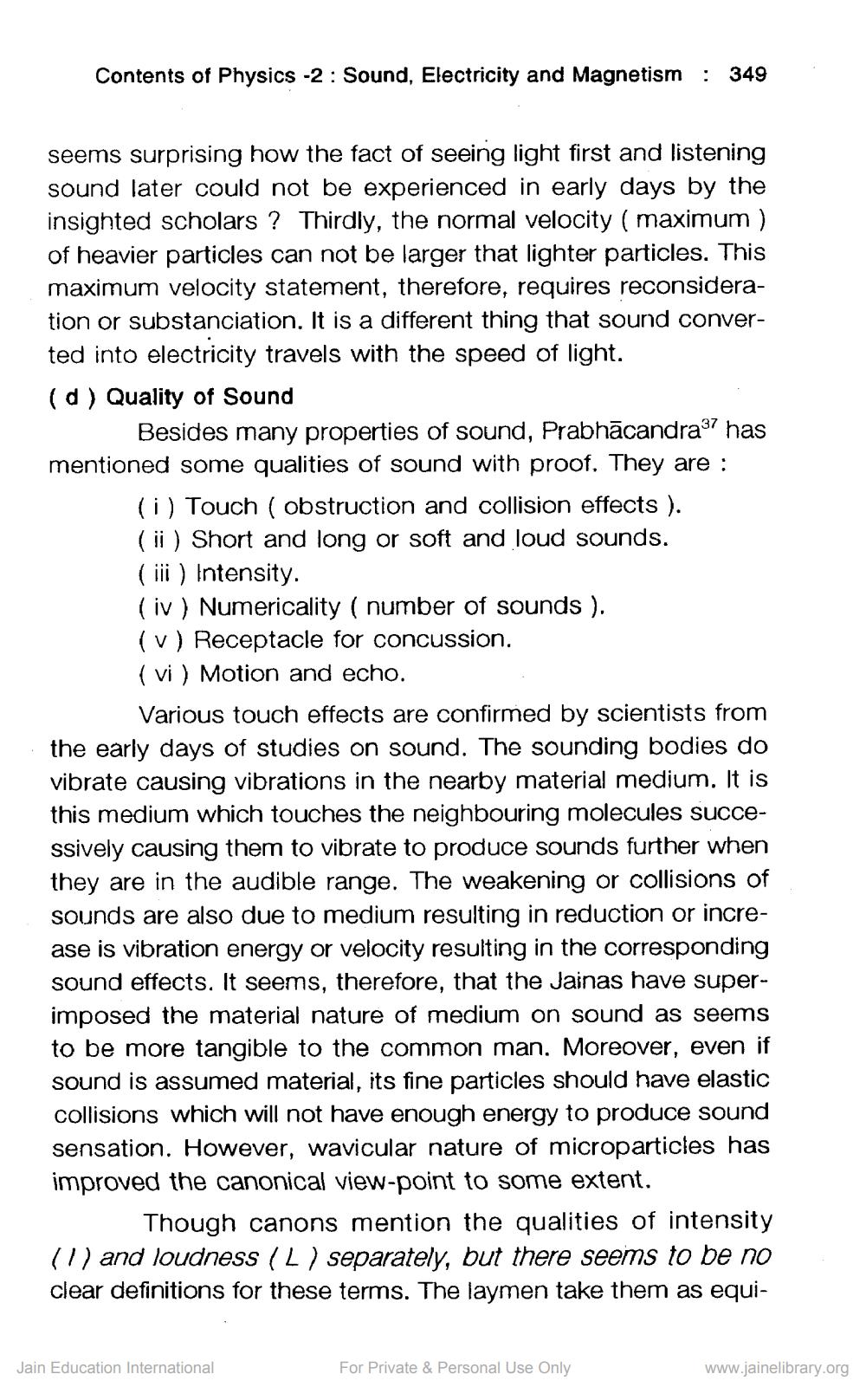________________
Contents of Physics -2: Sound, Electricity and Magnetism: 349
seems surprising how the fact of seeing light first and listening sound later could not be experienced in early days by the insighted scholars? Thirdly, the normal velocity (maximum) of heavier particles can not be larger that lighter particles. This maximum velocity statement, therefore, requires reconsideration or substanciation. It is a different thing that sound converted into electricity travels with the speed of light.
(d) Quality of Sound
Besides many properties of sound, Prabhācandra37 has mentioned some qualities of sound with proof. They are : (i) Touch (obstruction and collision effects). (ii) Short and long or soft and loud sounds.
(iii) Intensity.
(iv) Numericality (number of sounds).
(v) Receptacle for concussion.
(vi) Motion and echo.
Various touch effects are confirmed by scientists from the early days of studies on sound. The sounding bodies do vibrate causing vibrations in the nearby material medium. It is this medium which touches the neighbouring molecules successively causing them to vibrate to produce sounds further when they are in the audible range. The weakening or collisions of sounds are also due to medium resulting in reduction or increase is vibration energy or velocity resulting in the corresponding sound effects. It seems, therefore, that the Jainas have superimposed the material nature of medium on sound as seems to be more tangible to the common man. Moreover, even if sound is assumed material, its fine particles should have elastic collisions which will not have enough energy to produce sound sensation. However, wavicular nature of microparticles has improved the canonical view-point to some extent.
Though canons mention the qualities of intensity (1) and loudness (L) separately, but there seems to be no clear definitions for these terms. The laymen take them as equi
Jain Education International
For Private & Personal Use Only
www.jainelibrary.org




